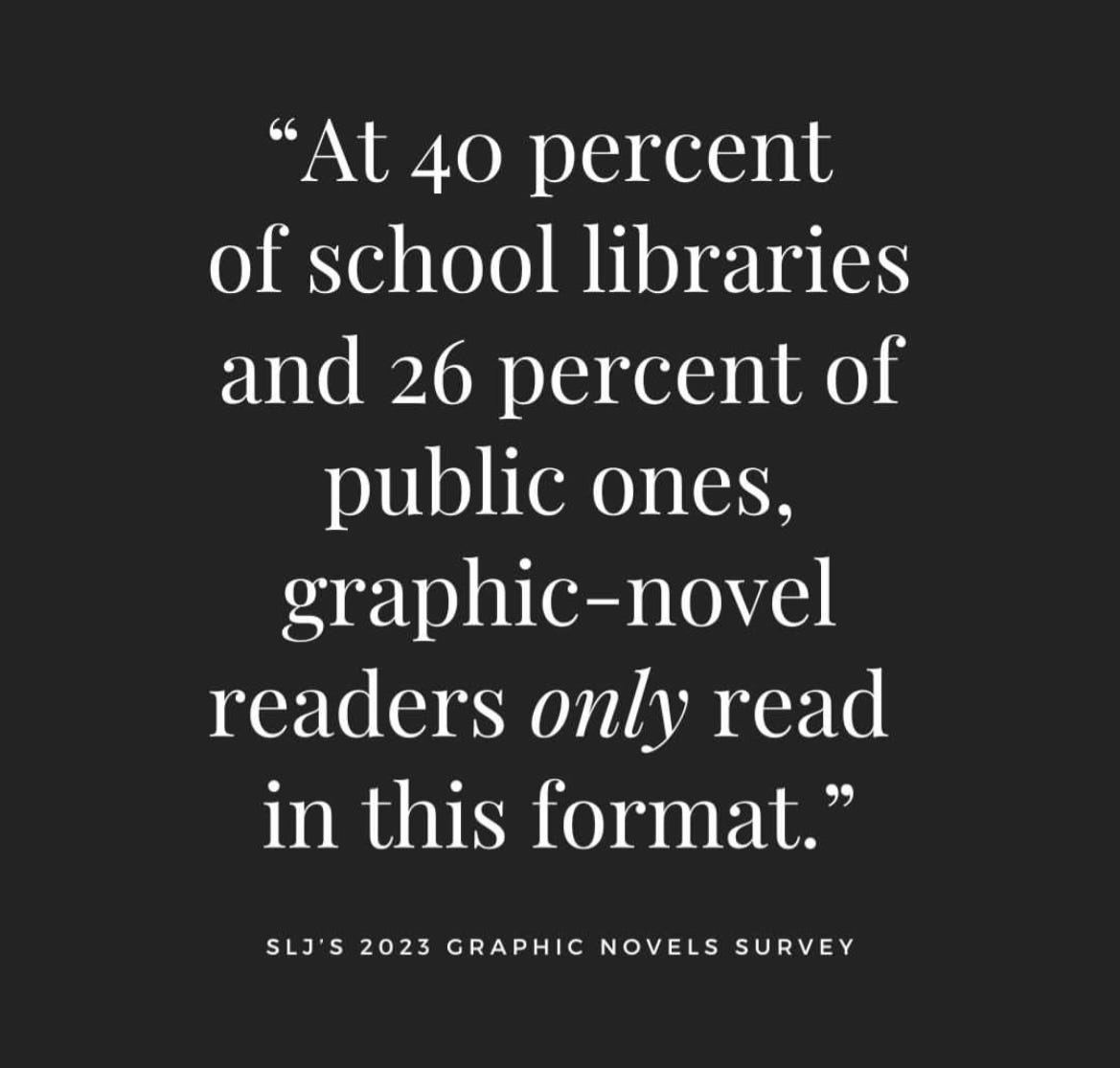What do you think of when you hear the term Graphic Novels? Do you hear comic books? Do you think of Archie and Veronica, or Spiderman, or does your mind trip over the word “graphic” and conjures up images of women with Barbie proportions in skimpy clothing seducing (or being seduced by) action heroes? To be fair, graphic novels can be all of those things, but they can also be The Sandman, by Neil Gaiman, Maus, by Art Spiegelman, From Hell, by Alan Moore, and Fun Home, by Alison Bechdel. They can also be Calvin and Hobbes, and Spy vs. Spy, and Heartstoppers, full of truths and laughter, and resonating in very different, yet equally valid ways with youth and adults.
“Graphic novels push the boundaries of storytelling by using imagery to bring fantastical worlds to life. They can make historical moments accessible and display human emotions that easily get lost in translation in prose. That’s to say it’s not all superheroes and monsters: There’s a whole wide world of literary graphic novels and memoirs to explore.” – Arielle Avila, New York Magazine
School Library Journal posted about graphic novel readers with the startling, yet unsurprising statistics that the majority of graphic novel readers only read in this format, and a large number of librarians in both school and public libraries recommend graphic novels to early readers and English language learners. Our children loved the compilation books of Calvin and Hobbes, Tundra, and Spy vs. Spy long past the age when they “should have” been reading chapter books, and I’m convinced that being able to read whatever entertained them created an association between reading and pleasure that continues today, despite the best efforts of the standardized American education system.
The bias against graphic novels as literature exists in the same world that looks down upon romance and fantasy as “trashy” or lacking substance and excellence. Yet Maus is taught in my kids’ high school as part of the AP English and European History block, and remains one of the most banned books in the United States. The Complete Persopolis, by Marjane Satrapi is a highly rated graphic novel which has been made into an animated movie, and explores Satrapi’s life in Tehran from age 6-14 during the Islamic Revolution. The artwork is described as deeply relatable to readers, and the format makes the memoir digestible, with simple details allowing the reader to understand complex emotions. Comics are especially effective at providing emotional content that doesn’t take itself too seriously, which is part of the secret sauce of attracting early readers.
There is significant research that shows that reading comprehension is greater with graphic novels, which makes them ideal for children who struggle with reading. Anecdotally, it’s also clear that children who are allowed to choose their own reading material are much more likely to continue reading into adulthood - to become “readers.” And Shana Frazin, a senior staff developer at the Reading and Writing Project at Teachers College, Columbia University, says:
“It’s not that comics are lacking in sophistication. It’s that we teachers are lacking in the practice of seeing the complexity in these texts.”
Are there any graphic novels that you recommend to children, or to adults who enjoy the medium?





The same is truth for language learning as well: I am trying to improve my French but find it very hard to read actual novels. For me, graphic novels are the way to go. The combination of pictures and words actually helps me understand the content so much better. And yes, it gives me much more pleasure reading them compared to a plain novel.
Interestingly, Belgium is a country, where many adults read graphic novels, and it is less of an issue for children to have their comic books accepted as proper reading material.